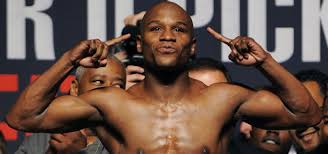Do you want BuboFlash to help you learning these things? Or do you want to add or correct something? Click here to log in or create user.
#analyst-notes #has-images #money #reading-agustin-carsten

If both Y and V are constant, then the equation indicates that an increase in money supply will lead to a proportional increase in price level.
This equation of exchange leads to the quantity theory of money, which hypothesizes that a change in the money supply will cause a proportional change in the price level because velocity and real output are unaffected by the quantity of money.

The Quantity Theory of Money
Money Supply (M) x Velocity of Money (V) = Price (P) x Real Output (Y)
-
The velocity of money is the average number of times a dollar is used to purchase final goods and services during a year. It is computed as V = GDP/Money Supply = PY/M. In essence, it is the turnover rate of money. For example, if the nominal GDP is $200 billion and the money supply is $40 billion: V = 200/40 = 5.
- The equation of exchange reflects two ways of viewing GDP: the left side reflects the monetary flow of expenditures on final products and the right side reflects the sum of the price (P) times the output (Y) of each final product purchased during the period.
If both Y and V are constant, then the equation indicates that an increase in money supply will lead to a proportional increase in price level.
This equation of exchange leads to the quantity theory of money, which hypothesizes that a change in the money supply will cause a proportional change in the price level because velocity and real output are unaffected by the quantity of money.
If you want to change selection, open document below and click on "Move attachment"
Subject 1. What is Money?
hasing power. However, the widespread use of credit cards will tend to reduce the average quantity of money people hold. Deposits are money, but checks are not - a check is an instruction to a bank to transfer money. <span>The Quantity Theory of Money Money Supply (M) x Velocity of Money (V) = Price (P) x Real Output (Y) The velocity of money is the average number of times a dollar is used to purchase final goods and services during a year. It is computed as V = GDP/Money Supply = PY/M. In essence, it is the turnover rate of money. For example, if the nominal GDP is $200 billion and the money supply is $40 billion: V = 200/40 = 5. The equation of exchange reflects two ways of viewing GDP: the left side reflects the monetary flow of expenditures on final products and the right side reflects the sum of the price (P) times the output (Y) of each final product purchased during the period. If both Y and V are constant, then the equation indicates that an increase in money supply will lead to a proportional increase in price level. This equation of exchange leads to the quantity theory of money, which hypothesizes that a change in the money supply will cause a proportional change in the price level because velocity and real output are unaffected by the quantity of money. <span><body><html>
Subject 1. What is Money?
hasing power. However, the widespread use of credit cards will tend to reduce the average quantity of money people hold. Deposits are money, but checks are not - a check is an instruction to a bank to transfer money. <span>The Quantity Theory of Money Money Supply (M) x Velocity of Money (V) = Price (P) x Real Output (Y) The velocity of money is the average number of times a dollar is used to purchase final goods and services during a year. It is computed as V = GDP/Money Supply = PY/M. In essence, it is the turnover rate of money. For example, if the nominal GDP is $200 billion and the money supply is $40 billion: V = 200/40 = 5. The equation of exchange reflects two ways of viewing GDP: the left side reflects the monetary flow of expenditures on final products and the right side reflects the sum of the price (P) times the output (Y) of each final product purchased during the period. If both Y and V are constant, then the equation indicates that an increase in money supply will lead to a proportional increase in price level. This equation of exchange leads to the quantity theory of money, which hypothesizes that a change in the money supply will cause a proportional change in the price level because velocity and real output are unaffected by the quantity of money. <span><body><html>
Summary
| status | not read | reprioritisations | ||
|---|---|---|---|---|
| last reprioritisation on | suggested re-reading day | |||
| started reading on | finished reading on |
Details
Discussion
Do you want to join discussion? Click here to log in or create user.